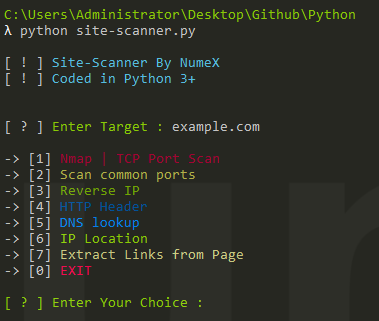Stasis
A simple static site generator with deployment to S3/Cloudfront.
Features
Stasis is a static website generator written in Python, using Pandoc to convert Markdown documents to html rendered with Jinja2 templates, and optionally deploying to Amazon S3 and Cloudfront.
Stasis is designed to mimic the workflow offered by Jekyll and is mainly targeted at personal blogs. The feature set is quite basic, but this also makes the program easy to understand and extend to fit your needs.
- Conversion of Markdown posts to html, with Pandoc extensions available at your discretion.
- Workflow similar to Jekyll: init, clean, build, serve, deploy.
- Easy to use templates with Jinja2.
- A basic development server for previewing the site locally.
- Index pages with pagination.
- Static or "flat" pages, also written in Markdown and rendered to a specified url (eg. about, contact, 404).
- A sidebar with links, recent posts, and topics.
- Topic pages.
- RSS feed generation.
- Deployment to S3 with dry-run, ignore on server, exclude from upload, and Cloudfront invalidation.
- Static file pass-through for CSS, Javascript, media, and legacy content.
- Purely static html output.
For more detail and background, please see my blog post about why I wrote Stasis.
Install
First, install Pandoc following the documentation for your system.
To install the latest distribution of Stasis from PyPI, install using pip. The install will create a console script called stasis, so I recommend doing this within a virtual environment.
pip install stasis-ssg
Alternatively, for the latest source code, clone this repository first and then install the package from a local working directory, for example:
mkdir stasis-devel && cd $_
mkdir .venv
python3 -m venv .venv/stasis
source .venv/stasis/bin/activate
git clone https://github.com/czep/stasis.git .
pip install -e .
Run stasis -v to verify that the install worked.
Use
After installation, create a new working directory in which to develop your site. Make sure this is a new empty directory:
mkdir ~/mysite && cd $_
stasis init
The init command will create a basic starter site in the current directory. The default setup will look like this:
├── _pub # target location for building the site and staging for deployment
├── drafts # optional drafts folder
├── pages # static pages
├── posts # markdown posts
├── stasis_config.py # configuration options
├── static # files to be copied directly to _pub
└── templates # Jinja2 templates
After initializing the site, the next steps are:
- Edit
stasis_config.pyto customize your site's metadata and other configuration options. - Edit the templates to get the layout you want.
- Copy your CSS file to
static/css/main.css. Add any additional static files to thestaticdirectory. These will be copied to_pubwithout being processed. - Add static pages to the
pagesdirectory. - Add posts to the
postsdirectory.
These commands will help you build and deploy your site:
stasis build
stasis clean
stasis build --target=prod
stasis serve
stasis deploy --dry-run
CLOUDFRONT_ID=EXXXXXXXXXXXXX stasis deploy
build
Running stasis build alone or with the development target stasis build --target=dev will generate the site with relative links. Internal and /. This makes it easier to navigate through the site when serving it locally. Building with the production target stasis build --target=prod will prepend the site's baseurl defined in stasis_config.py to all links, making them absolute instead of relative. This is likely what you will want to do before deployment to ensure that all of your links point to their respective canonical pages.
To build the site with drafts enabled, run:
stasis build --drafts
clean
At any point if you want to do a fresh rebuild, run stasis clean. This will delete everything in _pub as well as the cached posts in post_store.db.
serve
Start a very simple web server to preview your site. Unlike in Jekyll, there is not an option to serve the site with or without drafts. The server will simply show you whatever has been built in the _pub directory.
deploy
Before trying to deploy, change the AWS_PROFILE and S3_BUCKET config options. I recommend creating a new profile that has S3 Read/Write permission as well as permission to invalidate your Cloudfront distribution. Add this profile to your ~/.aws/credentials.
The first time you try to deploy, please do so with the --dry-run argument to make sure the the results are what you expect. Dry run will connect to your S3 bucket, compare local and remote files, and print an output containing three sections:
- New files to upload to S3
- Modified files to upload to S3
- Old files to delete from S3
Examine the list before running without the dry-run option. In stasis_config.py, there are two pattern lists that can help control what is and is not deployed: IGNORE_ON_SERVER specifies patterns that will not be added, modified, or deleted. Use this for any legacy content that you want to manage manually. EXCLUDE_FROM_UPLOAD specifies patterns that will not be uploaded to S3 from your local filesystem.
By default, stasis will compress most text files before uploading. This can be toggled with the S3_USE_GZIP config option. If True, for all files that meet the gzip criteria, a copy will be created with an extension of ".upload". This is simply a gzipped copy of the original file and is only used during the deployment process. However, you must keep the pattern "*.upload" in EXCLUDE_FROM_UPLOAD to prevent these files from also being uploaded.
When ready to deploy, pass your cloudfront distribution ID as an environment variable:
CLOUDFRONT_ID=EXXXXXXXXXXXXX stasis deploy
After deploying to S3, this will start a root-level wild-card invalidation '/*'. If you do not want stasis to do the invalidation for you, or if you are not using Cloudfront at all, simply run:
stasis deploy
This will deploy to S3 but will not attempt a Cloudfront invalidation.





